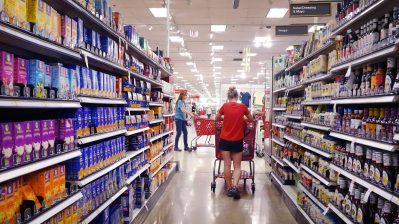‘Vulture investors’ feast on scrap assets
TEXT OF INTERVIEW
Kai Ryssdal: So let’s take a minute this afternoon to consider where we are. The stock market’s on an upswing. Banks are back to raking in cash. Car companies are on the mend. A recipe for the happy music if ever there was one. Not, though, according to Dun and Bradstreet. The research firm is predicting a 60 percent increase in corporate bankruptcies here and in Europe over the rest of the year. That makes most of us cringe. But it makes a certain class of investors rub their hands. They’re called distressed investors. Or, less kindly, vultures. Mark Sorensen works for CarVal Investors. Good to talk to you.
MARK SORENSEN: Hi Kai, thanks for having me.
Ryssdal: First things first, I would guess that vulture investor is probably not your preferred term of art.
SORENSEN: You are correct. I think maybe a more useful moniker is a scarp processor. I realize that’s not a very sexy sounding title. But you know the kinds of things we look at in the distressed debt world are loans and bonds that your typical mutual fund buyer of high-yield debt no longer has a use for, and they take it to the distressed marketplace to get rid of it. Much like you would take a beaten up washing machine to the scarp yard.
Ryssdal: All right, so let’s break down a little bit. Distressed debt. So that is what?
SORENSEN: Distressed debt typically are loans and bonds that are in some sort of distress and need to be restructured, often in default. Right now, you have a lot of perfectly healthy, or companies that are performing well, that are trading at distressed prices. So one way to measure distressed debt is they look at loans that trading at below 80 cents on the dollar and bonds that are trading below 60 cents on the dollar and total that up. So at the end of December last year that totaled just over a trillion dollars. The previous high was in 2001 when that amount hit $158 billion. So these are unprecedented times.
Ryssdal: And when you say things like 80 cents on the dollar or 60 cents on the dollar, that means that you’re not paying face value for something. You are buying at less than face price.
SORENSEN: That’s exactly right.
Ryssdal: What are you buying, though, as you go through that scrap yard, and you go looking for distressed debt to buy, what are you buying? Are you buying those mortgage-backed securities we’ve been hearing so much about, are you buying bonds from companies that have gone under? What exactly is it?
SORENSEN: What I’m really talking about are corporate bankruptcies. An example would be a local company here, the Minneapolis Star-Tribune, which was purchased in 2007 and part of that purchase was financed by a $340 million loan. And the challenge right now is to figure out, OK, given what the economy looks like today, how profitable are they going to be and how much debt can that company carry going forward. And that’s really what we are trying to figure out.
Ryssdal: And I’m sure you guys are smart and all, but it seems to me that the risk that you take as you buy some of these assets could be substantial.
SORENSEN: You’re absolutely right, and in fact, the risk has never been greater. One way to think about that risk is, OK, I’m buying a discounted piece of distressed debt, what if I get it wrong? How low can that go? You can lose a lot of money, certainly based on where things we’re returning historically.
Ryssdal: So in real life vultures, of course, pick over the bones of dead animals and help the whole ecosystem recover. Would it be fair to say that? That in some measure is what you guys are doing, or are you just out to make a buck?
SORENSEN: That’s not exactly how I would put it. If you think about distressed debt, there’s really sorta two paths that a company can go down: You can be liquidated or you can be restructured. A liquidation I guess, something we’re all familiar with, I think, is Circuit City. There just wasn’t room for another big-box consumer electronic retailer, and it was liquidated. That’s not often the best outcome for creditors and for other stake holders like equity holders. Instead, you can think of distressed debt buyers, again, buying things at a discount, and looking to turn a balance sheet. Turn a company’s debt obligations into a small enough size, they can manage it, that they can pay off in the future, and emerge through the restructuring process as a health company that can be useful again.
Ryssdal: And we have to say make you guys some money.
SORENSEN: Uh, hopefully.
Ryssdal: Mark Sorensen with CarVal Investors in Minnesota. Thanks very much, Mark.
SORENSEN: My pleasure, Kai. Thank you.
There’s a lot happening in the world. Through it all, Marketplace is here for you.
You rely on Marketplace to break down the world’s events and tell you how it affects you in a fact-based, approachable way. We rely on your financial support to keep making that possible.
Your donation today powers the independent journalism that you rely on. For just $5/month, you can help sustain Marketplace so we can keep reporting on the things that matter to you.


















